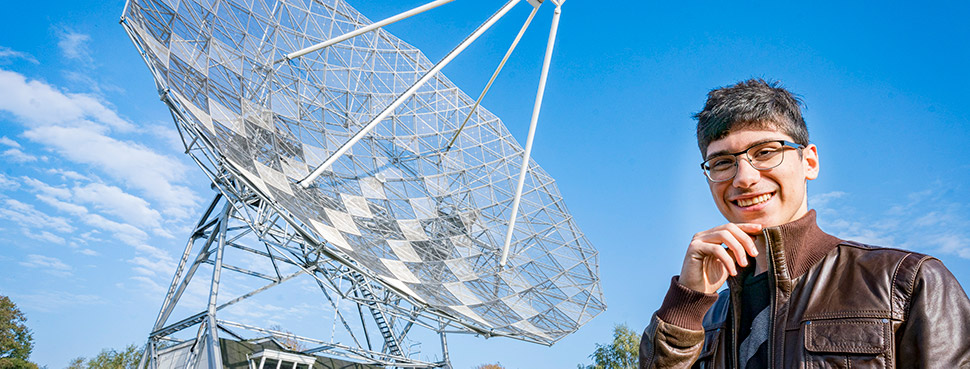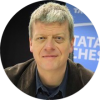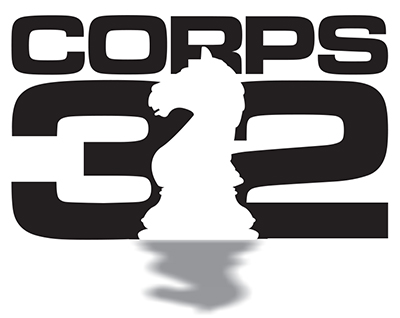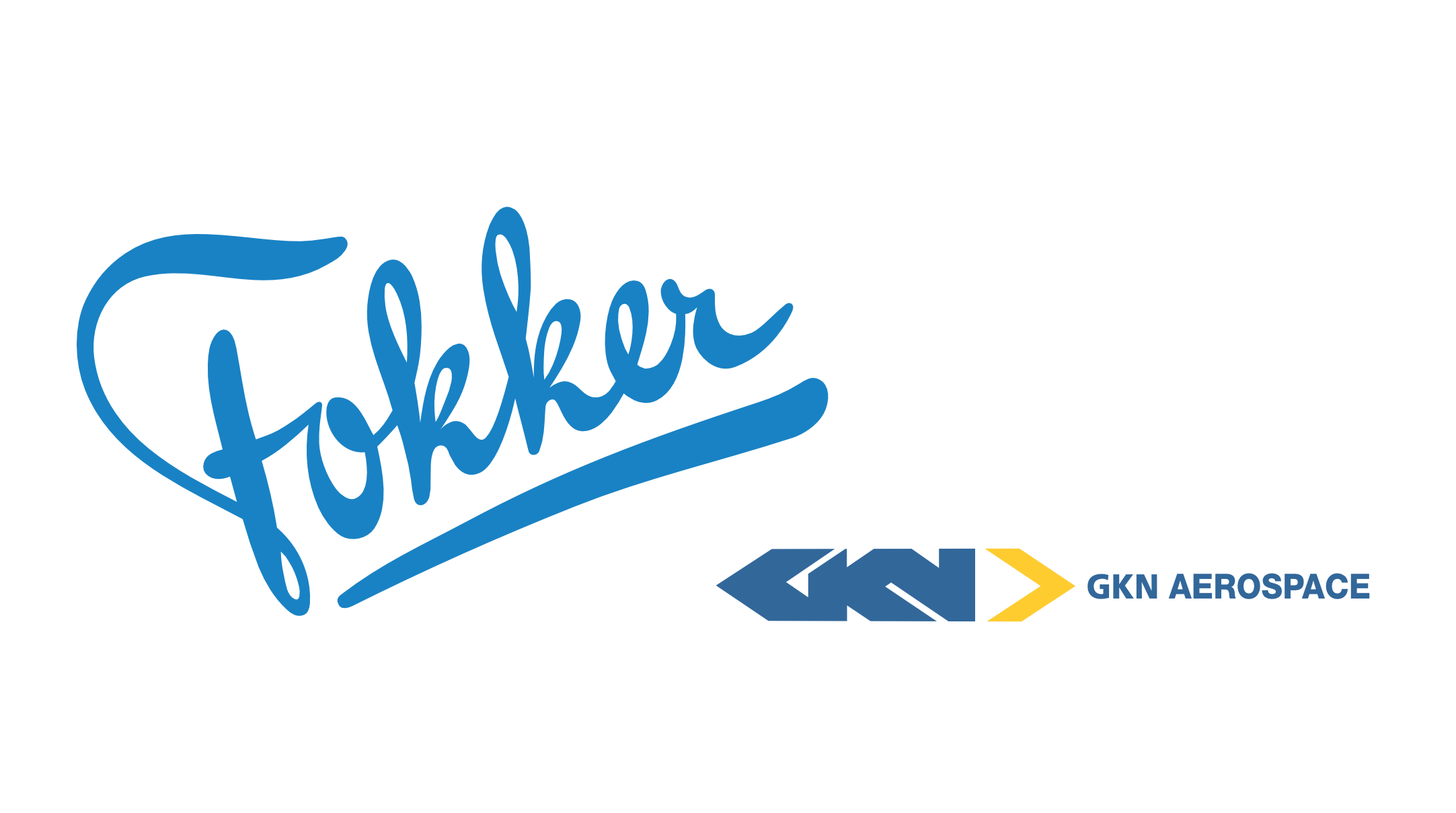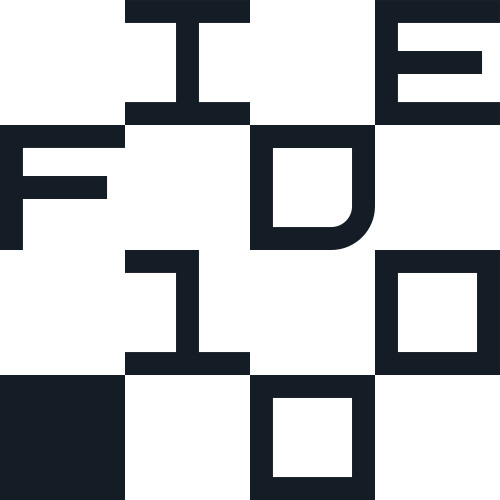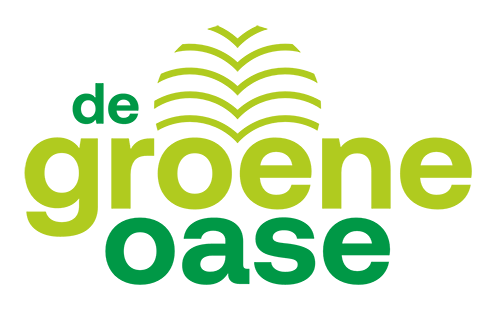The four match players of Hoogeveen Chess – Alireza Firouzja, Jorge Cori Tello, Zhansaya Abdumalik and Jan Timman, plus Geertje Timman and Ivette Ale Garcia Morales, Jorge Cori’s girlfriend, had a highly interesting afternoon on their free day. They paid a visit to the Netherlands Institute for Radio Astronomy ASTRON. Here, in Dwingeloo, just about 15 kilometers from Hoogeveen, intensive scientific research and development is being done on world top level. The high point of the afternoon was a visit to the Dwingeloo Telescope which dates from 1956.
First the institute’s manager Gert Kruithof informed the company about the different measuring devices that have been developed at ASTRON. The Dwingeloo Telescope used a single dish which was, for instance, the first to discover that the Milky Way has a spiral shape. In 1970, 14 dishes in a row were built in nearby Westerbork. All these dishes are pointing in one direction and are constantly moved together in the same direction.
‘We have found all kinds of “weird objects”,’ Kruithof explained. ‘Like black holes and neutron stars. The universe is very absurd.’ Thanks to a recent upgrade of the receivers of the Westerbork telescope, it can scan a 40 times larger area of the sky at once than with the previous receivers. This enables ASTRON to scan the sky faster. In 2010, ASTRON also opened a new telescope called LOFAR (= Low Frequency Array); a field of antennas consisting of a pole with four wires, which can be very easily pointed to a source in the sky, using software.
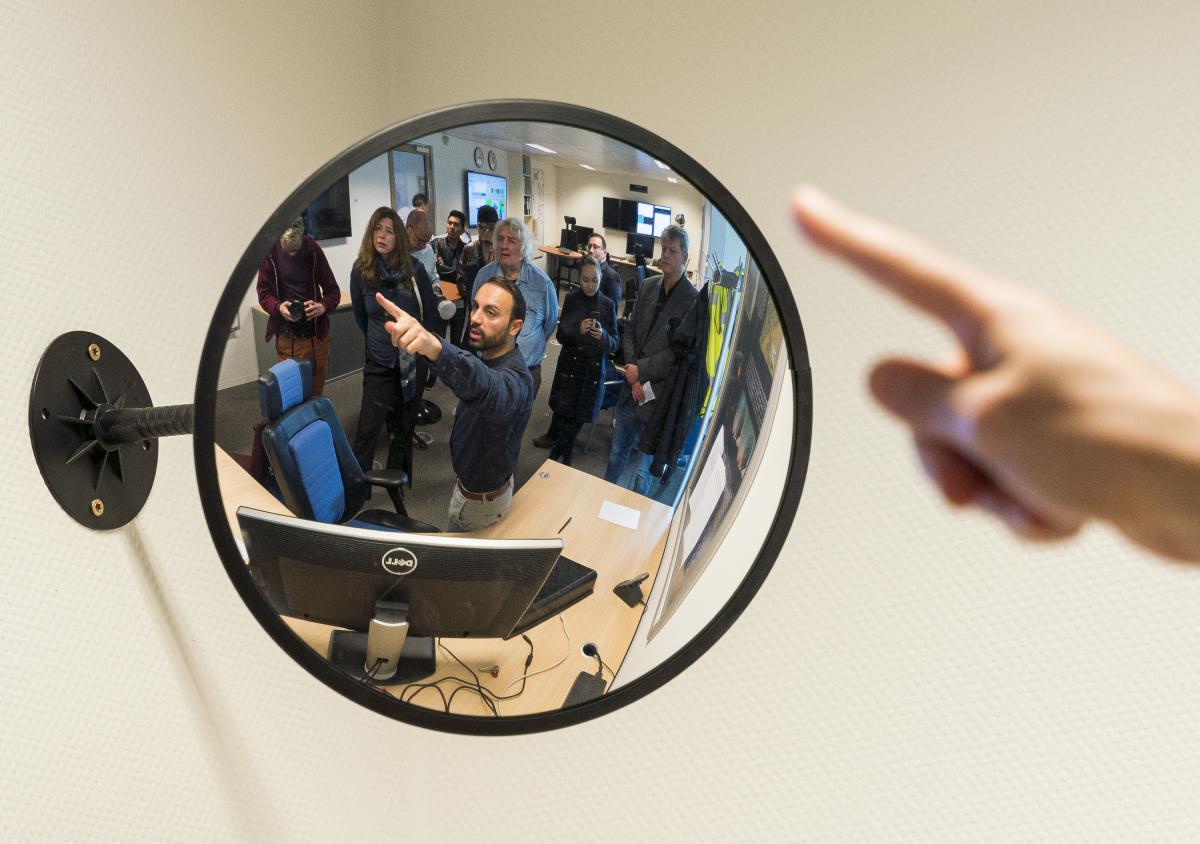
The amount of data collected by the Institute is so huge that they develop their own technology for it, with the help of several industrial partners. An inconceivable amount of discoveries have been made here in Dwingeloo. For example, WiFi was discovered thanks to a research project that had been started by the Dutchmen Johan Hamaker and Jan Noordam and the Australian John O’Sullivan to find ‘small black holes’, the existence of which had been suggested by Stephen Hawking. The black holes weren’t found, but in the end the mathematics used to find them gave us WiFi. And the technology to collect big data can also be used in, for instance, medical science.
Hungarian astronomer Zsolt Paragi took the company to a correlation centre hosted by the Joint Institute for VLBI ERIC (JIVE), where big data from telescopes all around the world are collected in a super-computer. This big computer produces so much heat that the room in which it is placed has to be cooled, using a lot of energy. The chess company enjoyed a real ‘science-fiction’ sensation when Zsolt turned the lights off in that small room with the ‘correlator’ blazing and all kinds of lights flashing. ‘You can solve the Najdorf here,’ photographer Lennart Ootes whispered to Zhansaya Abdumalik.
Italian scientist Pietro Zucca explained the workings of the LOFAR antennas in the control room. He told the group that the data are stored in long-term archives in the Netherlands, Poland and Germany. The magnetic tapes that hold the data have no copies, because that would be too expensive.
King Willem-Alexander and Queen Maxima of the Netherlands recently visited ASTRON, but they were only there for 25 minutes – the chess players had more than an hour!
After the guided tour through the Institute, the great radio-telescope from 1956 was visited. Inside the telescope, volunteer Tammo Jan Dijkema started turning the colossus (40 tons of steel) ‘like a very slow merry-go-round’ towards the spiral arms of the Milky Way and after that to a pulsar (a neutron star which had collapsed into a ball measuring 20 km across but equally heavy as our own sun – one teaspoon weighs as much as the entire Mount Everest) at about 3000 light-years distance. The pulsar turns and emits radio light, which is observed on earth and converted into pulses. This ‘heartbeat of a dead star’ was disturbed by a loud second noise when somebody in the company turned on his mobile phone – a nice demonstration of what can happen!
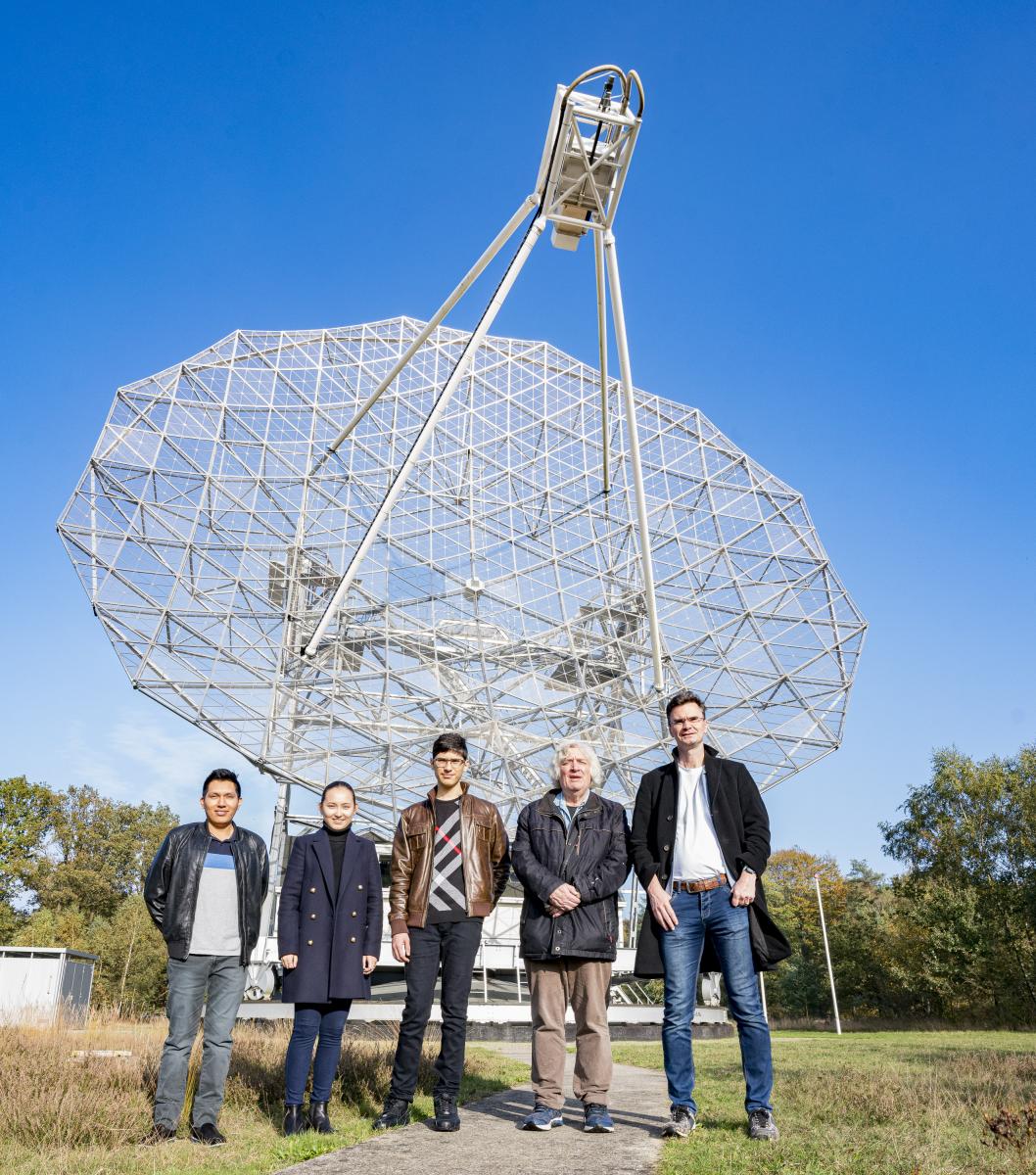
The players and the tournament director received an ordner with information about the Institute, and a nice futuristic tool pen from ASTRON. After some pictures had been taken in front of the telescope, this extremely interesting excursion was concluded. It’s hardly credible that such an institute, the top three of the world in importance which produces such fascinating results, is ‘hidden away’ near the pretty National Park Dwingelderveld, and so few people know about it.
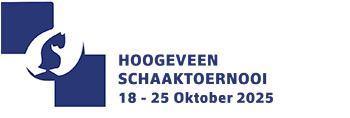
 .
. 
